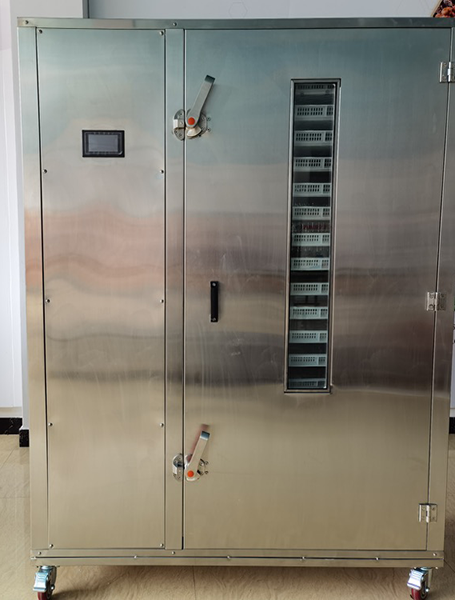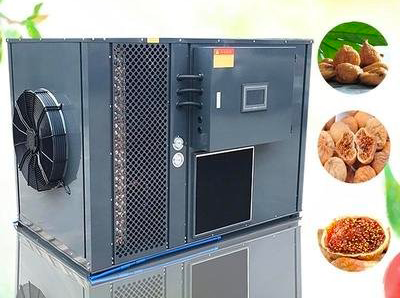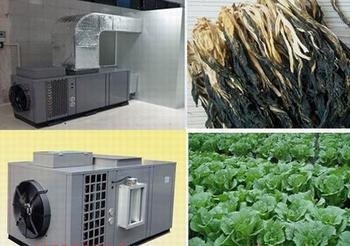
Content Menu
● Introduction
● Understanding Food Drying Technologies
>> Sensor Dryers
>> Heat Pump Dryers
● Energy Efficiency Comparison
>> Energy Consumption
>> Cost Efficiency
● Applications in Food Processing
● Detailed Comparison Table
● Factors Influencing Dryer Selection
● Maintenance Considerations
● Innovations in Food Drying Technology
● Conclusion
● FAQ
>> 1. What is the main difference between sensor dryers and heat pump dryers?
>> 2. Which type of dryer is more energy-efficient?
>> 3. Can both types of dryers be used for all food products?
>> 4. How do I choose between a sensor dryer and a heat pump dryer?
>> 5. Are there any maintenance requirements for these dryers?
Introduction
In the realm of food drying technology, the choice between sensor dryers and heat pump dryers has become a significant consideration for manufacturers, wholesalers, and consumers alike. As a leading manufacturer of food drying machines in China, we understand the importance of energy efficiency in food processing. This article will explore the differences between sensor dryers and heat pump dryers, their energy efficiency, and their applications in the food drying industry.

Understanding Food Drying Technologies
Food drying is a crucial process in preserving food quality and extending shelf life. The two primary technologies used in food drying are sensor dryers and heat pump dryers.
Sensor Dryers
Sensor dryers utilize advanced technology to monitor moisture levels in the air and adjust drying conditions accordingly. These machines are equipped with sensors that detect humidity and temperature, allowing for precise control over the drying process.
- Advantages of Sensor Dryers:
- Real-time monitoring of moisture levels
- Energy-efficient operation due to automatic adjustments
- Consistent drying results
- Reduced risk of over-drying or under-drying
Sensor dryers are particularly beneficial for delicate items such as fruits and vegetables, where maintaining optimal moisture levels is crucial to preserving flavor, texture, and nutritional value.
Heat Pump Dryers
Heat pump dryers operate by transferring heat from the environment to facilitate the drying process. They use a refrigeration cycle to extract moisture from the air, which is then expelled outside while warm air is circulated back into the drying chamber.
- Advantages of Heat Pump Dryers:
- Highly energy-efficient due to low-temperature operation
- Environmentally friendly as they reduce energy consumption
- Versatile for various types of food products
- Ability to recover and reuse heat within the system
Heat pump dryers are ideal for bulk drying operations where maintaining consistent temperatures is essential. They are particularly effective for drying meats, nuts, and grains without compromising quality.
Energy Efficiency Comparison
When comparing sensor dryers and heat pump dryers, energy efficiency is a critical factor to consider.
Energy Consumption
- Sensor Dryers:
Sensor dryers consume energy based on real-time moisture readings. This means they can operate efficiently by reducing energy usage when optimal conditions are met. The sensors allow for dynamic adjustments that can lead to significant energy savings during operation.
- Heat Pump Dryers:
Heat pump dryers are known for their low energy consumption rates. They can operate at lower temperatures compared to traditional drying methods, leading to significant energy savings. The ability to recycle heat also contributes to their overall efficiency.
Cost Efficiency
While both technologies offer energy savings, heat pump dryers tend to have lower operational costs over time due to their efficient use of energy. The initial investment might be higher for heat pump systems; however, the long-term savings on energy bills can make them a more economical choice.

Applications in Food Processing
Both sensor and heat pump dryers have unique applications in the food processing industry.
- Sensor Dryers:
Ideal for products requiring precise moisture control, such as fruits, vegetables, and herbs. They ensure that food retains its quality and nutritional value while preventing spoilage.
- Heat Pump Dryers:
Suitable for bulk drying operations, such as nuts, grains, and meat products. Their ability to maintain low temperatures makes them perfect for sensitive items that could be damaged by excessive heat.
Detailed Comparison Table
| Feature | Sensor Dryer | Heat Pump Dryer |
| Energy Efficiency | Moderate | High |
| Temperature Control | Real-time adjustments | Low-temperature operation |
| Initial Cost | Generally lower | Generally higher |
| Operating Cost | Variable based on usage | Lower over time |
| Best For | Delicate foods | Bulk operations |
| Environmental Impact | Moderate | Low |
Factors Influencing Dryer Selection
When choosing between sensor dryers and heat pump dryers, several factors should be taken into account:
- Type of Food: Different foods require different drying techniques. For instance, fruits may benefit more from sensor technology due to their sensitivity to moisture levels.
- Production Volume: High-volume operations may find heat pump dryers more advantageous due to their efficiency in bulk processing.
- Energy Costs: Analyzing local energy costs can help determine which dryer will be more cost-effective in the long run.
- Space Availability: Heat pump systems may require more space due to their design; thus, available space should be considered before making a decision.
Maintenance Considerations
Both types of dryers require regular maintenance to ensure optimal performance:
- Sensor Dryers:
- Regularly check and clean sensors to ensure accurate readings.
- Inspect airflow pathways for blockages.
- Heat Pump Dryers:
- Clean filters frequently to maintain airflow.
- Monitor refrigerant levels and check for leaks.
Proper maintenance not only extends the life of the equipment but also ensures consistent performance.
Innovations in Food Drying Technology
The food processing industry is continuously evolving with new technologies aimed at improving efficiency and product quality. Recent innovations include:
- Smart Sensors: Advanced sensors that provide real-time data analytics on moisture levels and temperature fluctuations.
- Automation: Automated systems that integrate with existing production lines for seamless operation.
- Energy Recovery Systems: Technologies that capture waste heat from the drying process to enhance overall efficiency.
These innovations contribute significantly to improving energy efficiency while maintaining high-quality standards in food processing.
Conclusion
In conclusion, both sensor dryers and heat pump dryers offer unique advantages in terms of energy efficiency and application suitability within the food processing industry. While sensor dryers excel in real-time moisture monitoring and control, heat pump dryers provide superior energy savings and versatility for bulk operations. Ultimately, the choice between these two technologies will depend on specific needs and operational requirements.

FAQ
1. What is the main difference between sensor dryers and heat pump dryers?
Sensor dryers use real-time moisture sensors for precise control over the drying process, while heat pump dryers utilize a refrigeration cycle to transfer heat efficiently.
2. Which type of dryer is more energy-efficient?
Heat pump dryers are generally more energy-efficient due to their low-temperature operation and reduced energy consumption compared to traditional methods.
3. Can both types of dryers be used for all food products?
While both types can be used for various food products, sensor dryers are better suited for items requiring precise moisture control, whereas heat pump dryers are ideal for bulk operations.
4. How do I choose between a sensor dryer and a heat pump dryer?
Consider factors such as the type of food being dried, required moisture levels, operational scale, and long-term energy costs when choosing between these two technologies.
5. Are there any maintenance requirements for these dryers?
Both types require regular maintenance to ensure optimal performance. This includes cleaning filters, checking sensors (for sensor dryers), and ensuring proper airflow (for heat pump dryers).












